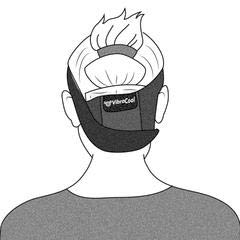Vibration Therapy – Drug Free Relief?
Before you get too excited, vibratory stimulation, or mechanical stimulation, for chronic pain, is an emerging type of therapy that directs vibrations either to the whole body or to the area of pain, such as a sore joint. It is gaining interest as a headache therapy, although it has been used for pain and even chronic pain for a long time.
In fact, vibration therapy was studied in the late 1800s by neurologist Jean-Martin Charcot. Charcot noticed that his patients with Parkinson’s disease seemed to improve after long train rides, and he wondered if vibration had anything to do with it. His theory was confirmed by his trials.
Later, his student, Georges Gilles de la Tourette (yes, the man who first described Tourette’s syndrome – Charcot named the syndrome after Gilles) experimented with vibration therapy for people with migraine.
Although interest has continued in mechanical stimulation, something has changed in the past 20 years – the availability of small devices with small motors that could be used in the home. Now actually, vibration can be achieved without a motor – using sound waves, for example. But whatever method may be used, it’s much easier today to make the device compact and even “wearable” (such as VibraCool, one popular example used for both joint and headache pain).
Many devices still run in the hundreds of dollars, although simple devices such as the one above are fairly inexpensive.
The vibrations are measured in hertz (Hz), describing the frequency of the vibration. Various frequencies and intensities may be used. It may be that this therapy will work even if you’re not aware of the vibration. But normally it’s felt to some extent. Often the vibrations are full-body, but now focal (or local) vibration is used for joint pain or headache, for example.
Although vibration therapy has been widely studied for pain conditions, and does seem to decrease pain in many cases, we’re not sure exactly why. However, there are many theories, and it may actually be for more than one reason that mechanical stimulation decreases pain.
To learn more about vibration therapy in general, this recently updated article from Practical Pain Management gives a good summary: Vibration for Chronic Pain
A clinical trial at Stanford University will be beginning soon, taking a look at vibration therapy for chronic pain, including migraine. In this example, the vibrator will be applied to the temple.
If you’re interested in being a part of the trial, contact Jennifer Hah at Stanford. All information is here: Vibratory Stimulation for the Treatment of Chronic Pain.

